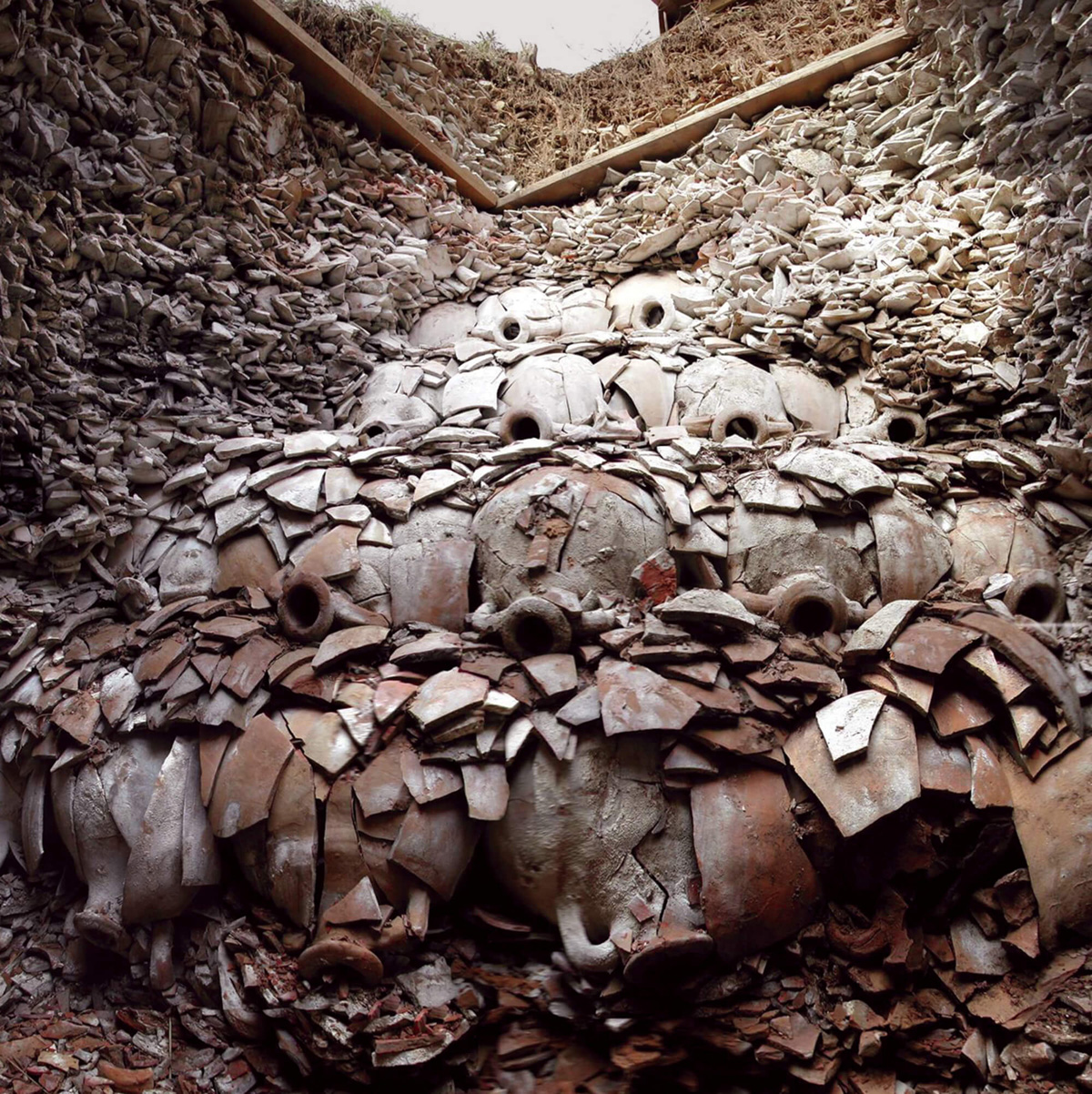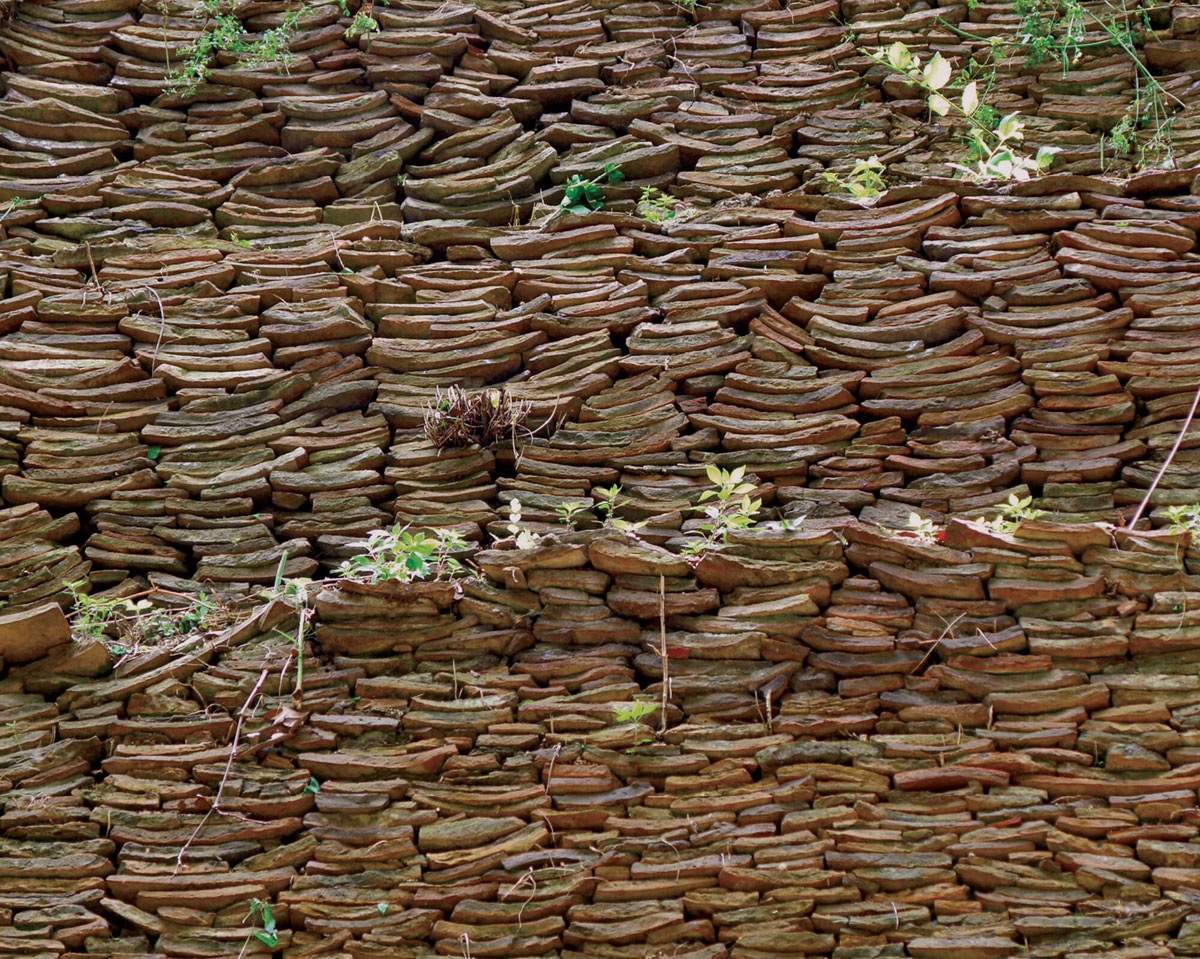Ingestion / Pitchers Mound
How the olive oil trade built the eighth hill of Rome
Leland de la Durantaye
“Ingestion” is a column that explores food within a framework informed by aesthetics, history, and philosophy.
“In the second century of the Christian Aera, the empire of Rome comprehended the fairest part of the earth, and the most civilized portion of mankind. The frontiers of that extensive monarchy were guarded by ancient renown and disciplined valor. The gentle but powerful influence of laws and manners had gradually cemented the union of the provinces. Their peaceful inhabitants enjoyed and abused the advantages of wealth and luxury.”[1] Rome was, in a word, nice. So incredibly so that all marveled at it. Visiting ambassadors were known to abandon their diplomatic mission so as to become simple citizens of Rome. And so we wonder what it was like.
Of the Roman archaeological sites dating to the second century of our Christian Aera, far and away the best preserved has also proven the most mysterious: “the eighth hill of Rome,” “the hill from across the seas,” what its greatest student called both “a sort of monument malgré lui” and “an abortive child of classical antiquity.”[2] Monte Testaccio, the Hill of Shards, dates from the time of the “Five Good Emperors,” as Machiavelli called them: Nerva, Trajan, Hadrian, Antoninus Pius, and Marcus Aurelius. Under their rule, Rome knew its maximal power and prosperity, its greatest peace, and after them things went so steadily and thoroughly downhill that by the deposition in 476 of the last Roman emperor, given the desperate name Romulus Augustus, the world would scarcely take any notice at all.


What then was Rome like before the decline, before the fall? From the Colosseum, completed in the first century with stones from the Second Temple of Jerusalem, we see that the Romans loved the spectacle of blood sport. From the Pantheon, we see that they possessed an architectural sense and skill that would soon be lost, as the architects of the great cathedrals of the middle ages and early Renaissance found themselves unable to understand how it had been built. From Trajan’s column, we see that Rome loved conquest, and its monumental narration. And from Monte Testaccio, we see that the Romans loved olive oil, and order. They loved olive oil with their food, they loved it on their bodies, they loved it to light Rome. Under the Five Good Emperors, roughly a million people lived in Rome, which meant massive quantities of olive oil arriving at a port that was near the place, according to the legend, where the infants Romulus and Remus, floating downstream in a basket, came to rest against a fig tree, and where they found their wolf.
Olive oil arrived at Rome’s port on the Tiber in large terra-cotta amphorae that were then emptied into more portable receptacles and discarded. Every day, amphorae carrying the most varied things arrived from all over the empire—grain from Egypt, wine from Gaul, fruit from Spain, salted fish from the Black Sea. But the amphorae that carried olive oil had a peculiarity such that they could not be reused or recycled in the customary manner. Other unwanted amphorae were crushed and mixed with lime to make cement. Upon contact with olive oil, however, lime produces a surprising chemical reaction, creating a soap that prevents cement from hardening. Moreover, the form of the olive oil amphorae made them difficult to crush. What does the most civilized portion of mankind under the gentle but powerful influence of laws and manners do in such a case? History’s answer is clear. It sets aside a space near its port where the amphorae were not hurled vaguely in a certain direction, nor thrown casually onto a pile, but where they were shattered, their shards carefully stacked one atop the other, with rows left for passage, and sprinkled with lime so as to produce the soap that would prevent the smell of rancid oil from disturbing those nearby. The Hill of Shards then grew, and grew, and grew, so much so that by the time the site fell into disuse in the middle of the third century, due to the introduction of a new type of amphorae and the relocation of the city’s docks, it was over 120 feet high and more than a half-mile around.